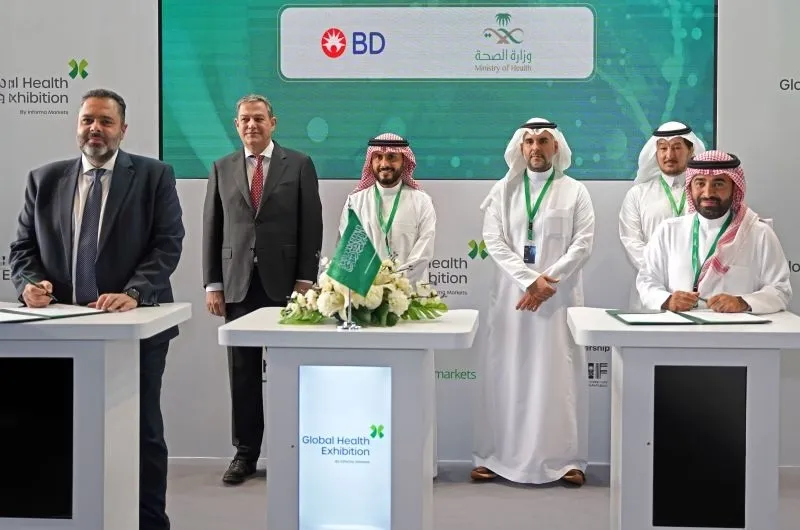In a bold step to transform its agricultural sector and secure long-term food stability, the Kenyan government has unveiled the National Irrigation Sector Investment Plan (NISIP). Launched on March 21, 2025, at the Kenyatta International Convention Centre (KICC) in Nairobi, the comprehensive 10-year strategy seeks to expand the country’s irrigated area by one million acres through an estimated investment of KSh598 billion. The plan, which emphasizes modernizing agriculture through advanced irrigation technologies and institutional reforms, is expected to create more than five million direct and indirect jobs while significantly boosting agricultural productivity and export earnings.
A Strategic Response to Agricultural Challenges
Agriculture remains a backbone of Kenya’s economy, contributing nearly 50% of the Gross Domestic Product (GDP) and providing livelihoods for millions. Despite its importance, only 747,000 acres in Kenya are currently under irrigation—representing a mere 21.3% of the country’s potential and only 5% of total arable land. Cabinet Secretary for Water, Sanitation, and Irrigation, Engineer Eric Mugaa, underscored this challenge at the launch event. “The NISIP seeks to accelerate irrigation expansion by integrating multiple funding sources and coordinating sector players,” he explained, emphasizing that modernized irrigation is not only crucial for achieving food security but also for reducing the nation’s import deficit.
The plan is a response to recurring challenges such as droughts, erratic rainfall, and outdated farming practices that have historically hindered Kenya’s agricultural potential. By investing in efficient water management and irrigation systems, Kenya aims to mitigate the adverse effects of climate change while creating a more resilient agricultural sector.
Five Key Development Pathways
NISIP outlines five critical pathways designed to overhaul Kenya’s irrigation infrastructure and boost overall productivity:
- Farmer-Led Irrigation Development (FLID):
This pathway focuses on empowering grassroots farmers by promoting self-initiated irrigation projects. By providing access to micro-financing, technical training, and modern irrigation equipment, FLID aims to democratize the benefits of modern agriculture. Local farmer groups will receive support to design, implement, and manage small-scale irrigation projects that are tailored to the unique needs of their communities. - Public Scheme Improvement:
Enhancing the performance of public irrigation schemes is at the core of the plan. This involves modernizing existing infrastructure, improving governance, and employing advanced management techniques. Investments in public schemes are expected to increase water use efficiency and reduce wastage, thereby maximizing the return on investment for state-funded projects. - Commercially Oriented Irrigated Farming:
Recognizing the potential of large-scale commercial farming, NISIP seeks to encourage private sector participation in irrigation ventures. By creating an enabling environment for private investment, the government aims to develop commercially viable projects that can produce surplus yields for export. This approach not only increases revenue but also helps to create a more competitive agricultural landscape. - Revitalization of Irrigation in Arid and Semi-Arid Lands (ASALs):
ASAL regions, which cover a significant portion of Kenya, have long suffered from water scarcity and low agricultural output. NISIP will provide targeted support to these regions by improving water resource management and constructing necessary infrastructure to bring irrigation to previously underutilized lands. This revitalization is expected to transform ASALs into productive agricultural hubs and reduce regional disparities. - Maximizing Community Irrigation Scheme Benefits:
Community-based irrigation schemes have the potential to deliver broad social and economic benefits. The plan emphasizes the importance of scaling these projects to ensure that local populations gain maximum benefit. By fostering community ownership and participation, the government aims to ensure that these schemes are sustainable, equitable, and tailored to local needs.
Mobilizing Investments: A Collaborative Funding Model
The NISIP is structured around a blended funding model that leverages both public and private investments. Approximately 61% of the required capital is expected to come from the private sector, while the remaining 39% will be provided by government allocations and development partners. This collaborative approach not only spreads the financial risk but also encourages innovation and efficiency by involving multiple stakeholders.
Principal Secretary in the State Department for Irrigation, Ephantus Kimotho, stressed the importance of this resource mobilization strategy. “Increasing investment in the irrigation subsector is critical to making Kenya food self-reliant and reducing food imports,” he stated. The anticipated funding mix is designed to drive rapid implementation of projects, ensuring that the plan’s ambitious targets are met within the stipulated timeframe.
Expanding Water Storage Capacity: The Backbone of Irrigation
A central component of NISIP is the expansion of water storage capacity, a critical prerequisite for supporting an enlarged irrigated area. The plan aims to increase water storage from the current 55 million cubic meters to 340 million cubic meters by 2027. This will be achieved through the construction and upgrading of several key dams across the country, including:
- Galana Dam: Located in Tana River/Kilifi counties, the dam is poised to become a crucial resource for agricultural irrigation and regional development.
- High Grand Falls Dam: Situated in Tharaka Nithi/Kitui, this dam will support irrigation in areas that have been traditionally underserved.
- Boston Dam: In Bomet, Boston Dam is expected to provide a stable water supply for high-value crops.
- Isiolo Dam and Radat Dam: Near Pekera in Baringo, these projects are part of a broader initiative to revitalize water resources in arid regions.
- Lowaat Dam: Planned for Turkana, Lowaat Dam will support large-scale irrigation projects in one of the country’s most water-scarce regions.
By significantly boosting water storage capacity, these projects will ensure that expanded irrigation schemes have a reliable water supply, even during periods of drought. This not only secures agricultural production but also enhances resilience against climate variability.
Economic and Social Benefits
The successful implementation of NISIP is expected to yield substantial economic and social dividends:
- Job Creation: The plan is projected to generate more than five million jobs, both directly and indirectly. This will include employment opportunities in construction, agriculture, maintenance, and ancillary services. For a country with a rapidly growing population and high youth unemployment, these new jobs are critical for social stability and economic empowerment.
- Increased Agricultural Productivity: Expanding irrigated land by one million acres is anticipated to drive significant increases in crop yields. Crops such as rice, maize, horticultural produce, and fodder will see improved production volumes, thereby enhancing food security and export potential.
- Revenue Generation: NISIP is forecast to generate annual revenues of approximately KSh240 billion once fully implemented. The increased productivity and efficiency in the agricultural sector will contribute to reducing the country’s import deficit and boosting overall economic growth.
- Livestock Support: The plan also supports the livestock sector, with projections to sustain over 700,000 heads of cattle through improved fodder production and integrated farming practices.
- Enhanced Food Security: By modernizing irrigation and boosting agricultural output, the plan aims to make Kenya more self-reliant in food production. This is particularly crucial in a global context where food supply chains are vulnerable to disruptions.
Technological and Institutional Modernization
In addition to infrastructure investments, NISIP emphasizes the adoption of advanced irrigation technologies and strengthening institutional capacities. The plan envisions the use of smart irrigation systems, which employ sensors and data analytics to optimize water use. These systems will enable farmers to manage water resources more efficiently, reducing wastage and increasing crop productivity.
The modernization agenda also extends to enhancing the governance frameworks within the irrigation sector. Training programs for local officials, capacity-building initiatives for water management, and the development of transparent monitoring systems are integral to ensuring that the plan’s objectives are met. By adopting a data-driven approach, the government aims to track progress in real-time, identify bottlenecks, and implement corrective measures promptly.
Environmental Sustainability and Climate Resilience
Sustainable water management and environmental conservation are central to the plan’s design. NISIP is structured to ensure that the expansion of irrigation does not come at the expense of natural ecosystems. Environmental impact assessments will be conducted for all major projects to minimize adverse effects on local flora and fauna. Furthermore, the plan includes measures for rehabilitating degraded lands and promoting soil conservation practices.
Climate resilience is another key focus. Kenya’s agricultural sector has been hit hard by unpredictable weather patterns and prolonged droughts in recent years. By improving water storage and implementing efficient irrigation practices, the government aims to buffer the impacts of climate change. In parallel, investments in drought-resistant crop varieties and improved forecasting systems will help farmers adapt to changing climatic conditions.
Regional and Global Implications
Kenya’s ambitious irrigation plan is not only a domestic policy initiative but also has significant regional and global implications. As one of East Africa’s largest economies, Kenya’s agricultural transformation could serve as a model for neighboring countries facing similar challenges. Regional collaborations on water resource management, cross-border infrastructure projects, and technology transfers could amplify the benefits of NISIP beyond Kenya’s borders.
Global investors and development partners have taken note of Kenya’s proactive approach. With the potential to generate substantial economic returns and create millions of jobs, the plan is attracting interest from international financial institutions and private sector stakeholders. Such collaborations could lead to the establishment of joint ventures, public-private partnerships, and innovative financing mechanisms tailored to large-scale infrastructure projects.
Challenges and the Path Forward
Despite its ambitious scope and promising prospects, the successful implementation of NISIP will not be without challenges. Key issues that need to be addressed include:
- Coordination Among Stakeholders: Effective coordination between government agencies, private investors, and local communities is crucial. A fragmented approach could lead to delays and inefficiencies.
- Financial Management: Mobilizing and managing the large capital required—KSh598 billion—demands rigorous financial oversight. Ensuring that funds are used efficiently and transparently will be critical to the plan’s success.
- Technical Capacity: The adoption of advanced irrigation technologies requires technical know-how and continuous training for both farmers and technicians. Investment in education and skill development will be vital.
- Environmental Concerns: Balancing infrastructure development with environmental sustainability will be a delicate task. Strict adherence to environmental standards and proactive mitigation measures are necessary to preserve natural resources.
Government officials remain optimistic about overcoming these challenges. Through robust policy frameworks, strong leadership, and collaborative partnerships, Kenya aims to turn these potential obstacles into opportunities for innovation and growth.
Concluding Perspectives
The National Irrigation Sector Investment Plan represents a transformative vision for Kenya’s agricultural future. By expanding the irrigated area, modernizing water management, and integrating advanced technologies, the plan sets the stage for a new era of food security, economic growth, and job creation. With an ambitious target to add one million acres of irrigation and generate over five million jobs, NISIP is poised to redefine the nation’s agricultural landscape.
As Kenya embarks on this bold journey, the strategic blend of public and private investments, technological modernization, and environmental stewardship offers a comprehensive roadmap for sustainable development. The positive ripple effects—from increased agricultural productivity and improved food security to enhanced economic resilience and reduced import dependence—are expected to benefit not only Kenya but also serve as an inspirational model for the region.
In a world where food security and sustainable development are increasingly critical, Kenya’s ambitious 10-year irrigation plan is a testament to visionary leadership and the transformative power of strategic investment. As the country leverages its rich natural resources and the ingenuity of its people, NISIP stands as a beacon of hope and progress, charting a course toward a more prosperous and self-reliant future for all Kenyans.
By integrating state-of-the-art irrigation systems with traditional farming practices, and by fostering collaboration among diverse stakeholders, Kenya is taking a definitive step toward ensuring that its agricultural sector remains resilient, competitive, and inclusive. The coming decade will reveal the full impact of these efforts, but early indicators suggest that this ambitious plan could well be the catalyst for a sweeping agricultural revolution—one that secures food supplies, creates millions of jobs, and drives economic transformation for generations to come.
Ready to take your career to the next level? Join our dynamic courses: ACCA, HESI A2, ATI TEAS 7 , HESI EXIT , NCLEX – RN and NCLEX – PN, Financial Literacy!🌟 Dive into a world of opportunities and empower yourself for success. Explore more at Serrari Ed and start your exciting journey today! ✨
Photo source: Google
By: Montel Kamau
Serrari Financial Analyst
26th March, 2025
Article, Financial and News Disclaimer
The Value of a Financial Advisor
While this article offers valuable insights, it is essential to recognize that personal finance can be highly complex and unique to each individual. A financial advisor provides professional expertise and personalized guidance to help you make well-informed decisions tailored to your specific circumstances and goals.
Beyond offering knowledge, a financial advisor serves as a trusted partner to help you stay disciplined, avoid common pitfalls, and remain focused on your long-term objectives. Their perspective and experience can complement your own efforts, enhancing your financial well-being and ensuring a more confident approach to managing your finances.
Disclaimer: This article is for informational purposes only and does not constitute financial advice. Readers are encouraged to consult a licensed financial advisor to obtain guidance specific to their financial situation.
Article and News Disclaimer
The information provided on www.serrarigroup.com is for general informational purposes only. While we strive to keep the information up to date and accurate, we make no representations or warranties of any kind, express or implied, about the completeness, accuracy, reliability, suitability, or availability with respect to the website or the information, products, services, or related graphics contained on the website for any purpose. Any reliance you place on such information is therefore strictly at your own risk.
www.serrarigroup.com is not responsible for any errors or omissions, or for the results obtained from the use of this information. All information on the website is provided on an as-is basis, with no guarantee of completeness, accuracy, timeliness, or of the results obtained from the use of this information, and without warranty of any kind, express or implied, including but not limited to warranties of performance, merchantability, and fitness for a particular purpose.
In no event will www.serrarigroup.com be liable to you or anyone else for any decision made or action taken in reliance on the information provided on the website or for any consequential, special, or similar damages, even if advised of the possibility of such damages.
The articles, news, and information presented on www.serrarigroup.com reflect the opinions of the respective authors and contributors and do not necessarily represent the views of the website or its management. Any views or opinions expressed are solely those of the individual authors and do not represent the website's views or opinions as a whole.
The content on www.serrarigroup.com may include links to external websites, which are provided for convenience and informational purposes only. We have no control over the nature, content, and availability of those sites. The inclusion of any links does not necessarily imply a recommendation or endorsement of the views expressed within them.
Every effort is made to keep the website up and running smoothly. However, www.serrarigroup.com takes no responsibility for, and will not be liable for, the website being temporarily unavailable due to technical issues beyond our control.
Please note that laws, regulations, and information can change rapidly, and we advise you to conduct further research and seek professional advice when necessary.
By using www.serrarigroup.com, you agree to this disclaimer and its terms. If you do not agree with this disclaimer, please do not use the website.
www.serrarigroup.com, reserves the right to update, modify, or remove any part of this disclaimer without prior notice. It is your responsibility to review this disclaimer periodically for changes.
Serrari Group 2025












